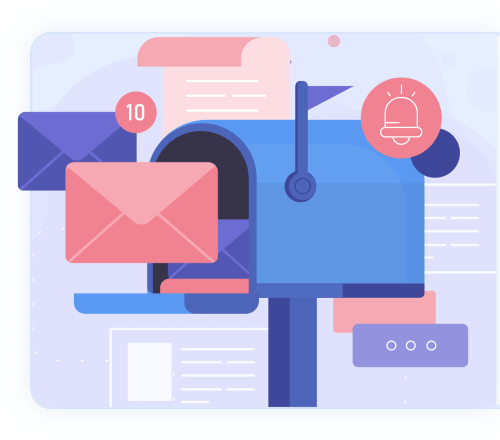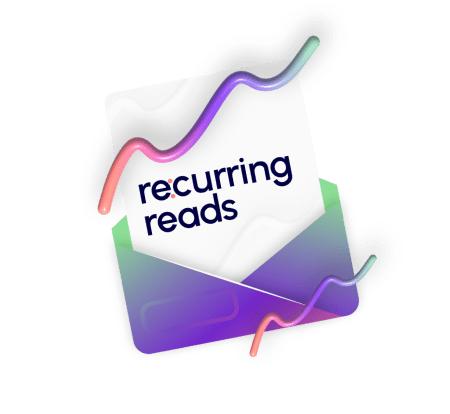Creating a Killer Customer Success Plan: Best Practices and Pitfalls to Avoid
What is a customer success plan? What are the best practices and steps involved in creating a customer success plan? Read on.

With so many different customers, each with their own needs and goals, helping your customers succeed can sound like a pipe dream. But that’s only if you’re not creating one key element—a customer success plan. What is a customer success plan and how do you create one that helps your customers see results? In this guide, we’ll cover what it is, best practices to try, mistakes to avoid, and much more!
What is a Customer Success Plan?
If a customer success management strategy is about helping your customers achieve goals through your product, then a customer success plan is the “what” and “how” portions of it. The plan states what value your product offers your customers and how you would deliver it to them. It consists of the series of actions you and your customers would take to help them meet their goals.
Expectations can arise from both ends—customers as well as vendors. To fulfill the expectations of both sides, you need a solid plan that would clearly state the actions you would take. It should be realistic, measurable and achievable to hold its viability. A customer success plan becomes a key tool for a CSM to align their resources, tasks, time, and efforts to meet the end goal.
Customer Success Plan Example
Customer success plans can be created if we keep certain important value-based pointers in mind. These customer success plans help you understand what can be achieved if everything goes well. The company’s customer success plan needs to include some aspects. Here are some examples-
Customer Success Plan Example 1
Customer information
This needs to include all the information about the customer like name, industry, company name, point of contact, and company executive.
Customer success team information
This section includes details about the customer team like primary contact information, project details, a secondary person of contact, and more.
Customer goals to be achieved
What is the customer’s goal they want to reach with your product? Their short-term goal? Long-term goal?
Customer success solution
- What is the customer’s definition of them being successful?
- Does their expectations match what your product can do? If not, can you offer alternative solutions to their problems?
- How will you and your customer work together to reach those goals?
- Timeline for each task to be completed and by who in order for goal to be reached.
- What’s the next step you or your customer should take if you can’t complete your task?
Open and existing issues
This includes if there are any ongoing action plans for the customer, any problems they are facing, or any processes or playbooks running.
Follow-up action
These are details of any follow-up action for your customers. This can include if customers have any questions about the product or service.
Agreement
Go over the entire success plan with your customer so that all parties—you and them—agree on the necessary steps that everyone must play to reach those goals.
Customer Success Plan Example 2
This customer success plan will involve the following elements:
- Personas to define and segment users to improve activation and onboarding flows
- These personas can be matched to expectations. Every customer has certain expectations. This can include reducing churn, increasing product usage, understanding user patterns, and keeping customers engaged.
- Feature importance can be marked as per which feature is best for a customer. You can pick the top 5 features that are needed for the customer.
| Goal for onboarding | Key metric or value |
| #1 Goal | Value for #1 delivered |
| #2 Goal | Value for #2 delivered |
A customer success plan example will only help you draw up a rough estimate for your company. However, the plan must differ from industry to industry.
Customer Success Plan Example 3
| Activity | Assigned to | Date | Task progress | Team |
| Contract signed | Sales manager | – | Done | Sales |
| Customer onboarding | Customer success manager or onboarding specialist | – | Done | Customer Success |
| Share product videos, resources, and implementation plan | Customer success manager | – | Done | Customer Success |
| Schedule a product demo | Customer success manager | – | In progress | Customer Success |
| Conduct training for customers | Customer success managers | – | Not started | Customer success |
| Respond to customer questions | Customer success managers | – | Not started | Customer success |
Benefits of Customer Success Plan
Here are a few benefits of having a customer success plan:
Consistent Efforts Throughout Customer Lifecycle
A customer success roadmap makes sure that you always have the end goal of your customer in mind. This way you never wander off in your efforts toward meeting the customer’s expectations. Every stage of the customer lifecycle must have their goals, and a plan, with the necessary action steps to help them reach it.
Easier to Adjust Strategy
Even with a well-thought-out plan, things are always bound to change. And while a success plan can’t prevent it, you can work with your customers to alter their plan as needed to fit their new goals.
Saves Time
It has been commonly observed that the time spent on firefighting issues is always more than the time when you were already prepared for it. Planning takes care of some of the unprecedented issues in advance so that you are always prepared for any possible outcome.
Reduce Churn
Some customers churn because they have perceived expectations of what your product can do for them and in a specific time frame but never fully discussed those expectations with you. But when you have a customer success plan with your customers, it’ll help keep everyone on the same page and increase transparency, allowing them to see exactly what needs to be done for their success.
Best Practices and Steps for Creating a Customer Success Plan

Here are some of the best practices that you can use to help you create a customer success plan that gets results.
Identify Expectations
You must help your customers express their expectations of your product right from the beginning. The best time to discover these expectations is the customer onboarding phase. Through strategic discussions, you must unravel their expectations of you.
Then clarify which expectations are achievable and which are not. You should also find out why they expect that out of your product. If you can get to the bottom of their expectations, you might find a solution that’s realistic for your product and helps satisfy your customer’s needs.
Create Processes to Meet Goals
Those expectations are the goals you would be directing your customer success plan towards. This is the “how” part of your plan. You must lay out clear steps you would be following towards meeting those goals. Make sure to cover all the possible scenarios that can occur during the course of action.
For example, if your customer’s expectation is quick onboarding, then you must have the right training material already in place along with the team of experts who would configure their systems.
Use Metrics to Measure the Progress
Through the right metrics, you must measure the progress of each of your customer success processes. For example, you must measure the time your customer takes for onboarding. Having a pre-defined ideal metric for each stage would help you know the efficacy of your processes. It will also help you know how you can increase the efficiency of the process.
For example, if you have already defined that the ideal time for onboarding is 60 days, then you can measure in real-time whether that is achievable or not.
Assign Employees and Schedules for Each Stage
Each stage should have a person responsible for its execution. Their responsibility lies in ensuring that the goal of their respective stage is being monitored and met. They would also measure the data for that stage and cross-check with the pre-defined ideal metrics.
The pre-assigned schedule must be followed that helps in tracking the progress of the tasks. Any lag in the execution must be discussed with the proper parties to see what needs to be done to get back on track or alter course.
Using a customer success plan template would help you cover all aspects of planning and execute with the right steps.
Mistakes to Avoid
Facing unprecedented challenges while executing a plan is natural. You cannot completely address all the challenges beforehand. Yet, there are few common mistakes that you should be aware of.
Not Considering Customer’s Inputs into the Plan
No matter how thorough and foolproof you have made your plan, if you forgot to take the customer’s input, it would most likely fail. Setting up customer goals is the first step. You must take every measure to include their views rather than assuming on your own.
Overdelivering
Creating a plan with ambitious goals that are hard to achieve can turn out to be disastrous. Make sure they are realistic and achievable. Otherwise, you’re creating unrealistic expectations that can potentially lead to churn.
Using Vanity Metrics
Using the right kind of metrics to measure your progress is must. Sometimes, CSMs use vanity metrics to measure their efforts that give a false sense of achievement. Instead, focus on metrics that are value-based.
Lack of Improvisation
A plan is a set of guidelines to execute when all things are in place. But sometimes when surprises occur, you must be able to improvise and re-prioritize your actions for a quick solution. An example could be an early warning of churn right after onboarding. Your plan should always be in a state of further enhancements.
The Best Way to Create a Customer Success Plan Template
The job of a customer success team is to decrease churn and improve retention rates. Having a customer success plan can help create clear outlines of the customer lifecycle. The main KPIs that should form the core of the customer success plan include health score, NPS, etc.
- Set the right expectations
- Activate onboarding process
- Understand the product
- Take action to improve customer value
- Help reduce churn
Customer Success Plan Templates
The customer success plan template will help you offer value across the customer lifecycle. By adding your company teams like marketing, sales, and CS teams to your customer journey, you can create an effective engagement strategy that is ongoing.
The key elements of a customer success plan template include-
- Show how your product meets or exceeds customer expectations
- Help them realize the product value
- Increase product adoption
- Create advocates and prevent churning
- Align customer expectations with your actions to expand
Customer Onboarding for Free Trials Template in a Customer Success Plan
| Sign-up requirements | In this step, you need to collect basic information. Automate this process as much as possible. |
| Welcome Email | The next step in the customer success plan should be with a welcome email. This email should have information for a free trial basis. Links of tutorials, forums, blogs, etc. should be helpful. |
| Simplify the process | Enable customers to understand the product via automated help. Determine how the product experience works. |
| Identify the customer’s aha moment | Capture when the customer meets their time to first value. |
| Inform Sales team | Once you know they understand the value, hand off to sales for conversion to paying customers. |
New Customer Calls Template in a Customer Success Plan
This is a customer success plan template for new customers kick-off call.
| Be prepared for the call | Collect customer data and identify the information that needs to be given to customers. |
| Call the customer | Communicate with the customer. Explain company details, clearly chalk out the onboarding process, help them understand timelines, milestones, expected goals and more. |
| Brief it up | Summarize the call in a document for future reference. |
| Get feedback from the call | Incorporate the customer recommendations to improve the product as much as possible. |
Customer Onboarding Success Plan Template
So once a customer is ready to be onboard, they can use this checklist/template to make sure they are on the right track.
| Verify customer and product information | Verify customer information from your CRM. Update if necessary, check customer details, product information, deliverables, timelines etc. |
| Welcome Email | Immediately follow up with a welcome email; offer help to the customer with respect to helpful links, resources, solutions, tutorials. |
| Set up a plan | Have a communication plan within your customer success plan. Ask customers for their product feedback and collect customer insights to see what interests them. |
| Have a support strategy | Analyse customer data to get an idea of customer issues and create a support strategy. |
| Focus on customer education | You then need to set up customer education channels. You need to let them know more about the product and improve the product experience. |
| Check-in with customers regularly | Ask customers regularly what they feel about your product in relation with them reaching their goals. |
| Get feedback | Ask customers for feedback. |
Template for Ongoing Engagement in Customer Success Plan
The template for customer success plan for ongoing engagement is useful in keeping customers retained and preventing churn. Since retention is the major factor which companies look to improve, this template will help.
| Provide Customer Education | In-app or voice chat help will ensure customers have an idea of the products to the full extent. A high-touch approach will help customers learn new features and stay connected with their complex learning curve. |
| Monitor metrics | Track key metrics and KPIs that affect customer health. |
| Set up annual reviews or QBRs | Conduct quarterly business reviews often and communicate the results. Make a note of customer improvements in that aspect and update it on their profile. |
| Create feature onboarding | For every new feature, what if the customer is stuck? Ensure that there is a small onboarding session for such events. |
| Keep in touch with customers | Have a plan to check in with customers regularly- get feedback, have key information assembled, and identify red flags. |
| Coordinate with other teams | Identify chances for upselling, communicate and monitor your customers for long term basis. |
Wrapping up
The purpose of any customer success plan is to have a clear path that you and your customer can follow to help them reach their goals. And with this guide, you’ll have a better strategy to help you create a plan for your customers that helps create a better relationship with them and help them find value in your product.
There should be a right blend of expectations from both the parties. And only then you must set out to create a plan that would help you achieve those goals. Improvisation and further enhancement of the plan are a part of the learning curve. Sticking to the plan is important but allowing some amount of space for further corrections is also vital to ensure your customer’s success.
You might also like:
- What Is a Customer Success Planner & How to Create a Customer Success Plan Template? – Includes steps that should be taken to develop the customer success plan template.
- To understand how SmartKarrot helps SaaS companies keep and grow loyal customers, Request a Demo.










